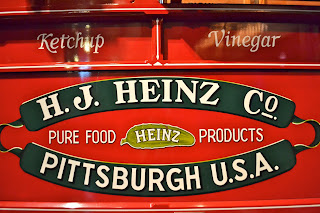Foam Party!: Modernist Cooking at Home
Pickled radishes with goat cheese foam
Modernist cooking (or modernist cuisine, or molecular gastronomy) has gradually been moving out of the realm of high end restaurants like Ferran Adria's "elBulli" or Grant Achatz's "Alinea" and into the kitchens of passionate amateurs (check out what the guys at Jet City Gastrophysics are doing) or science-minded home cooks. The publication of Nathan Myhrvold's epic tome, Modernist Cuisine last March stirred up a firestorm of interest in manipulating food using scientific techniques like centrifuging, and ingredients such as hydrocolloids and emulsifiers. These self-described modernist techniques allow us to reexamine how we prepare food, whether it is by finding a way to cook the perfect burger (you'll want 30 hours and a vacuum sealer) or by creating a platform that captures the absolute flavor and essence of an ingredient. These techniques also promote a sense of playfulness, encouraging the eater to question appearances and textures and forcing us to rethink how we believe food should look, taste, or even behave.
Unfortunately, many of the deeply impressive dishes produced by the Modernist Cuisine staff or chefs like Adria and Achatz require equipment that is out of range for the average home cook (liquid nitrogen dewers and refrigerated centrifuges, anyone?) but there are still some tools and ingredients that are easily accessible and relatively inexpensive. One of the most essential is the iSi whip/foam canister. The iSi allows the user to take any liquid and infuse it with carbon-dioxide or nitrous-oxide, turning it into a variety of foams. My brother-in-law and partner-in-mad-science picked up an iSi and we experimented with a series of recipes.
With the iSi, we created three dishes: a margarita with Cadillac foam, garlic cream "truffles," and radishes in edible dirt.
The margarita was the most straightforward, starting with a base of traditional margarita ingredients. Into the whipper we put egg whites, some orange juice, bitters, and Grand Mariner. Charged with a CO2 cartridge, we topped the base with fluffy, orange-infused foam, creating an airy layer of scent and flavor that preceded the actual base cocktail with each sip. It was delicious.
Up next were the garlic cream "truffles." The bro-in-law had prepped this course earlier in the day by steeping garlic cloves in olive oil, milk, and cream, then blending them all together, straining it, and infusing it in the iSi container for several hours. He had also made a coating of bread crumbs and dehydrated olives (that also made an appearance in the next dish). We piped the garlic mixture out of the iSi and into golf ball (truffle?) sized bites that we then rolled in the olives and crumbs.
The result were decadent bites of the thickest whipped cream you've ever had, infused with the taste of garlic that has had all the bite stripped away, leaving only the sweetness. The olive and crumb coating offered a necessary textural difference and enough salt to balance the fat in the cream. These were heavenly (if not really rich--one or two went a long way).
Finally, our last dish was a play on radishes in potting soil: we dehydrated Kalamata olives (we used an oven warming drawer, but you could use a food dehydrator) then chopped them into tiny pieces, giving the appearance of dirt. We quick-pickled some radishes (tops still on!) in a apple cider/sugar/salt solution for a few hours and also prepared a sauce of goat cheese and cream that we infused in the iSi canister.
Go ahead, eat the dirt!
Assembly was simple: "plant" a few radishes in a pot with the olive soil, then pile the rest (and a healthy mound of goat cheese foam) on a platter. Dip the radishes in the goat cheese, roll in the soil, then eat right off the stem. Amazing! Salty, briny, creamy, and crunchy all at once!
As you can probably imagine, these are not dishes you'd whip together after a long day at the office, but if you have a weekend day and some time to experiment, they're a lot of fun. Besides, once the prep is done, the assembly is really a breeze.
While you'll get no argument from me on the importance of appreciating food in a simpler, more natural state, exploring food using these non-traditional techniques is a fascinating education in and of itself. Many of these recipes are mini-lessons in chemistry..and it's the chemistry behind cooking that is helpful to understand, whether you're searing a steak on a grill or sous-vide cooking it in a vacuum sealed bag. By understanding how our cooking processes interact with our food, I believe that we can better prepare our meals, and thus develop a deeper appreciation for what we're eating. And who am I kidding, playing with foam is really fun...







Comments